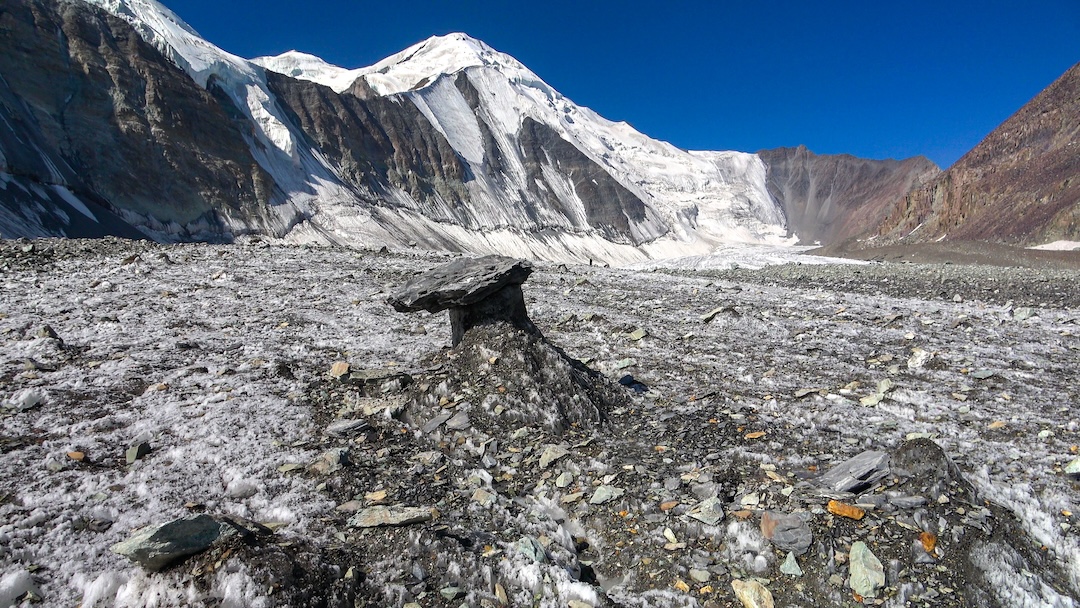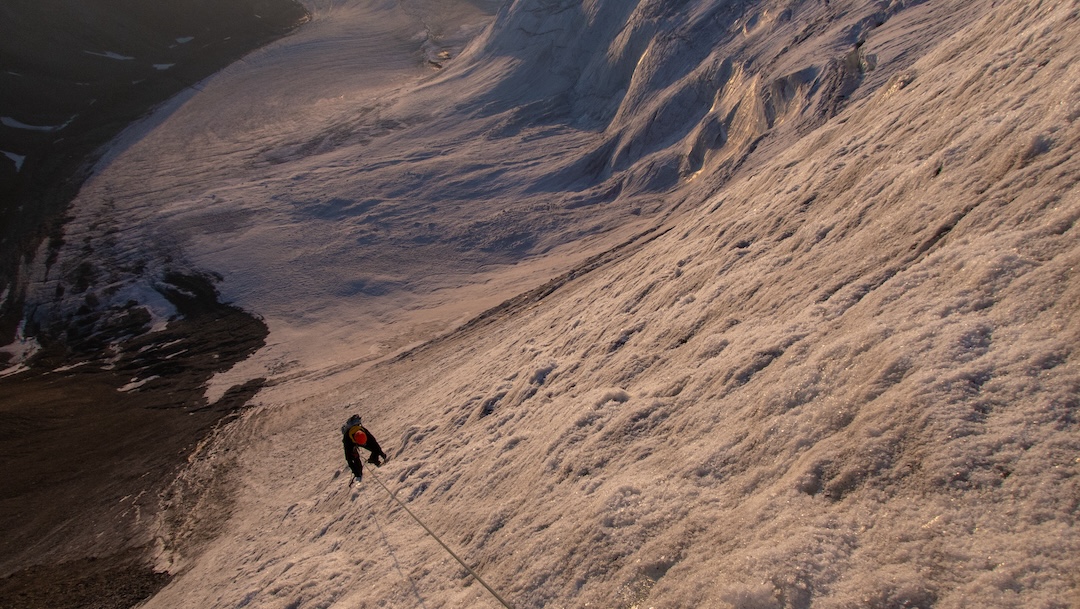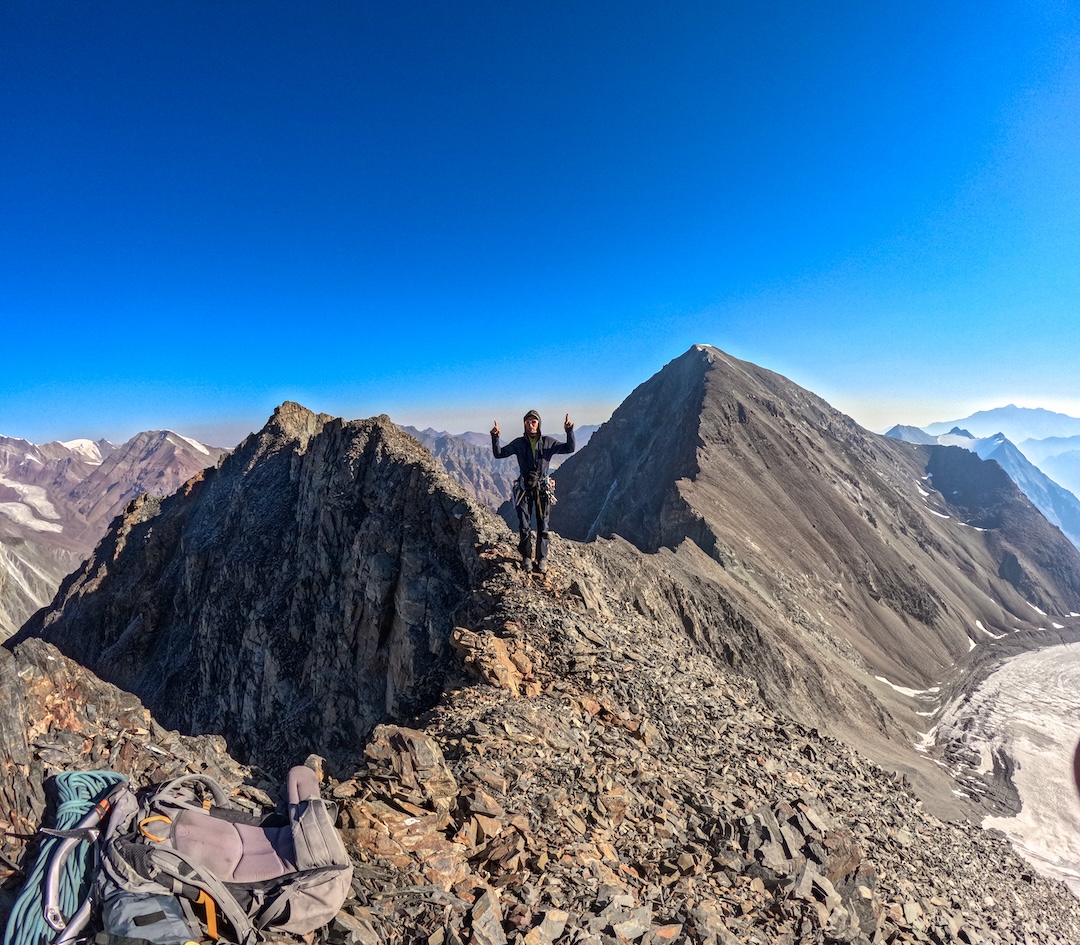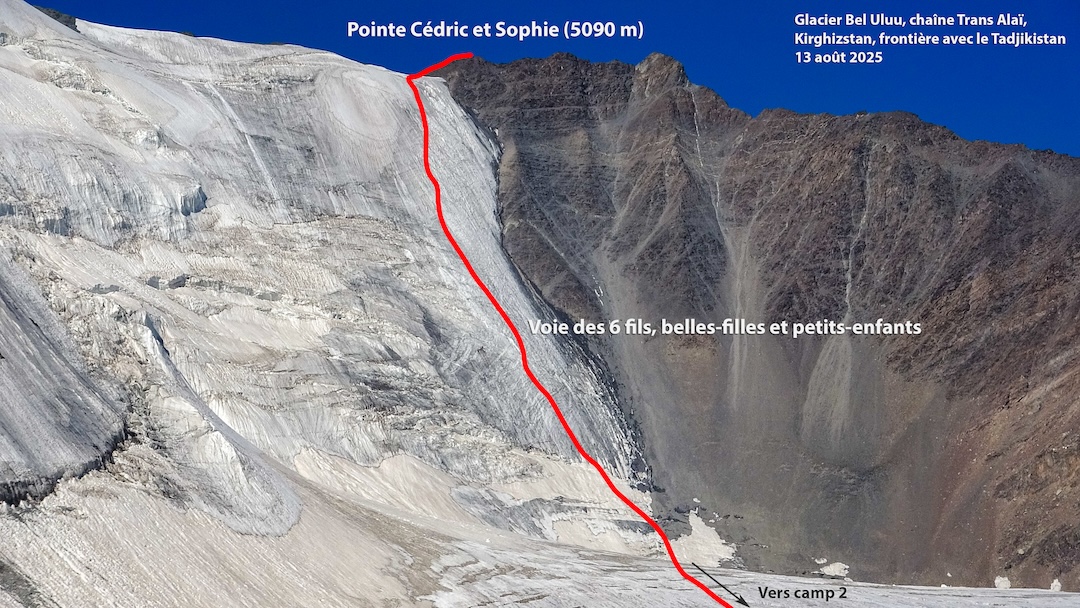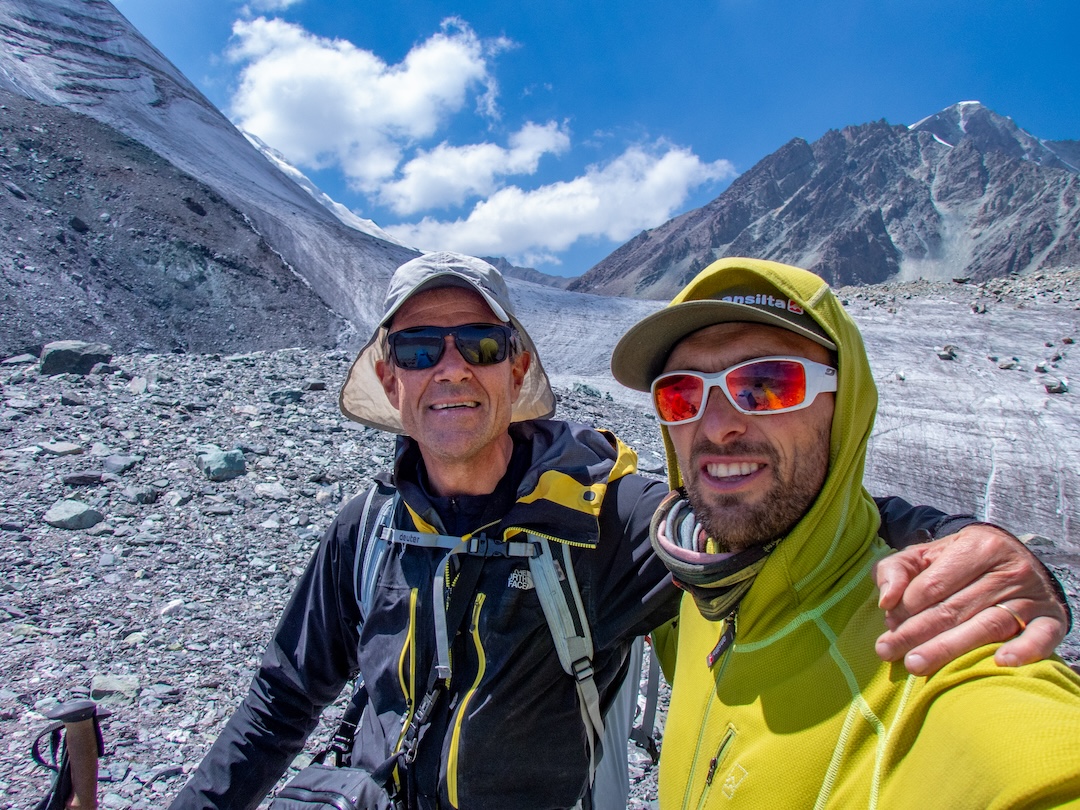Bel Uluu Valley, Cédric and Sophie (Point 5,090)
Kyrgyzstan, Pamir, Trans Alai
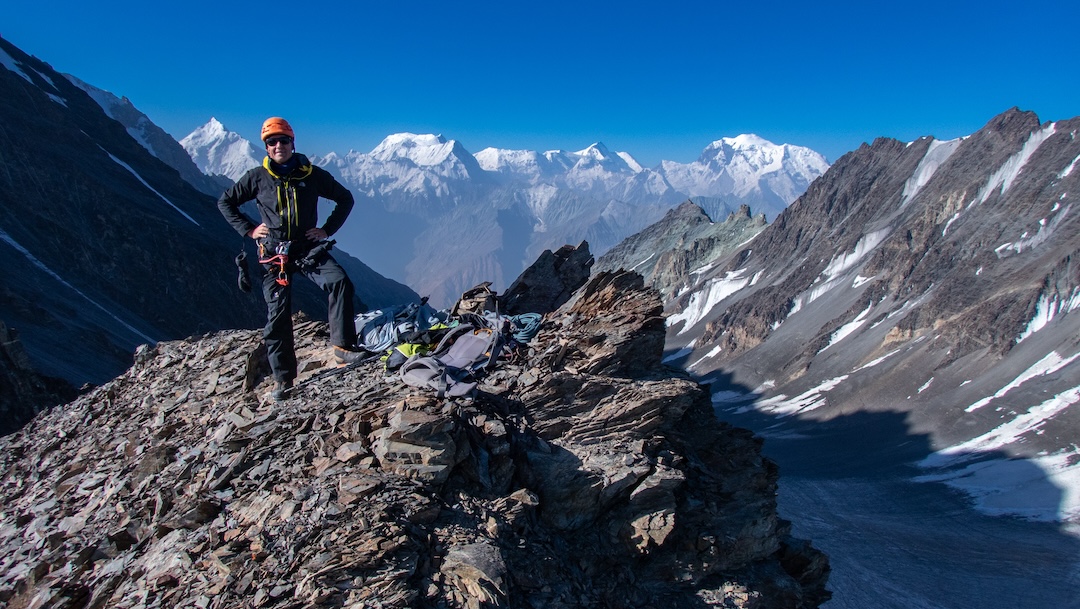
From August 5–20, along with Gabriel Fava, a friend and guide from Argentina, I returned to the Bel Uluu Glacier in the western part of the Trans Alai, west of Lenin Peak. In 2019, climbing with Nikolay Totmyanin (Russia), we made the first known ascent above this glacier, a route we named Espérance (see AAJ 2020). I organized this 2025 expedition with Gabriel to attempt one of the four summits of more 5,000 meters that dominate the Bel UIuu Glacier.
On August 11, we placed Camp 2 at the same place we had in 2019, at 4,420 meters (39.276853, 72,205710E), just at the base of the glacier. The glacier is retreating, and there is now a small lake at the base that didn’t exist in 2019. On the 12th, we made a reconnaissance on the glacier, which is no more than three kilometers long. The 0°C isotherm was exceptionally high at 6,500 meters. The mountain faces were very dry, with thin, black ice and rockfall.
In these conditions, most of the high peaks would be impossible or too dangerous to climb. Peak 5,080m (Google Earth altitude) on the south side of the glacier would be too dangerous, and it would not be possible to climb back down safely. Peak 5,402m could be climbed by ascending the face at the end of the glacier then following the ridge for one kilometer to the summit, but we would not have enough time to reach the top and climb back down before the sun hit the face. North of the glacier, Peak 5,284m is comprised of awful slopes of loose rock; we climbed to 5,100m there in 2019, and I had no interest in returning.
On the other hand, reaching a high point at the west end of the glacier seemed feasible. The east face had enough thick ice, and the top lay just above the face. [This top is a point on the shoulder near the end of the north ridge of Peak 5,402m.] On August 13, we left Camp 2 at 2:30 a.m. under clear sky, with a good freeze. In two hours we reached the base and started up the 250-meter face, which was 45° at the bottom and rose to 60°, on hard ice. We reached the ridge at 5,070 meters, on the border with Tajikistan. Twenty meters higher, we reached the top (5,090m, 39.269033N, 72.173918E). We left a note under a cairn that mentioned our passage.
The sun had hit the face, and we had to climb down rapidly, as rockfall had begun. We gave the route a grade of D+ in these conditions. By around 11:30 a.m., we were back at Camp 2. During the night, there was cloud cover and no refreeze, and we heard much rockfall—fortunately, we had already summited.
We called our top Cédric and Sophie, after two friends. Cédric was seriously disabled after a bike accident in May 1998, just months after his marriage with Sophie; we called our route The Six Sons, Daughters in Law, and Grandchildren.
At the end of this expedition, when I arrived at Daroot Korgon village, I learned the very sad news of the death of Nikolay Totmyanin, who had fallen ill while high on Pobeda Peak. I was very moved, as I have great memories of Nikolay and of the two expeditions we made, in 2014 in Kichkesuu Valley and in 2019 in Bel Uluu. I send all my condolences to his family and loved ones.
—Henry Bizot, France


